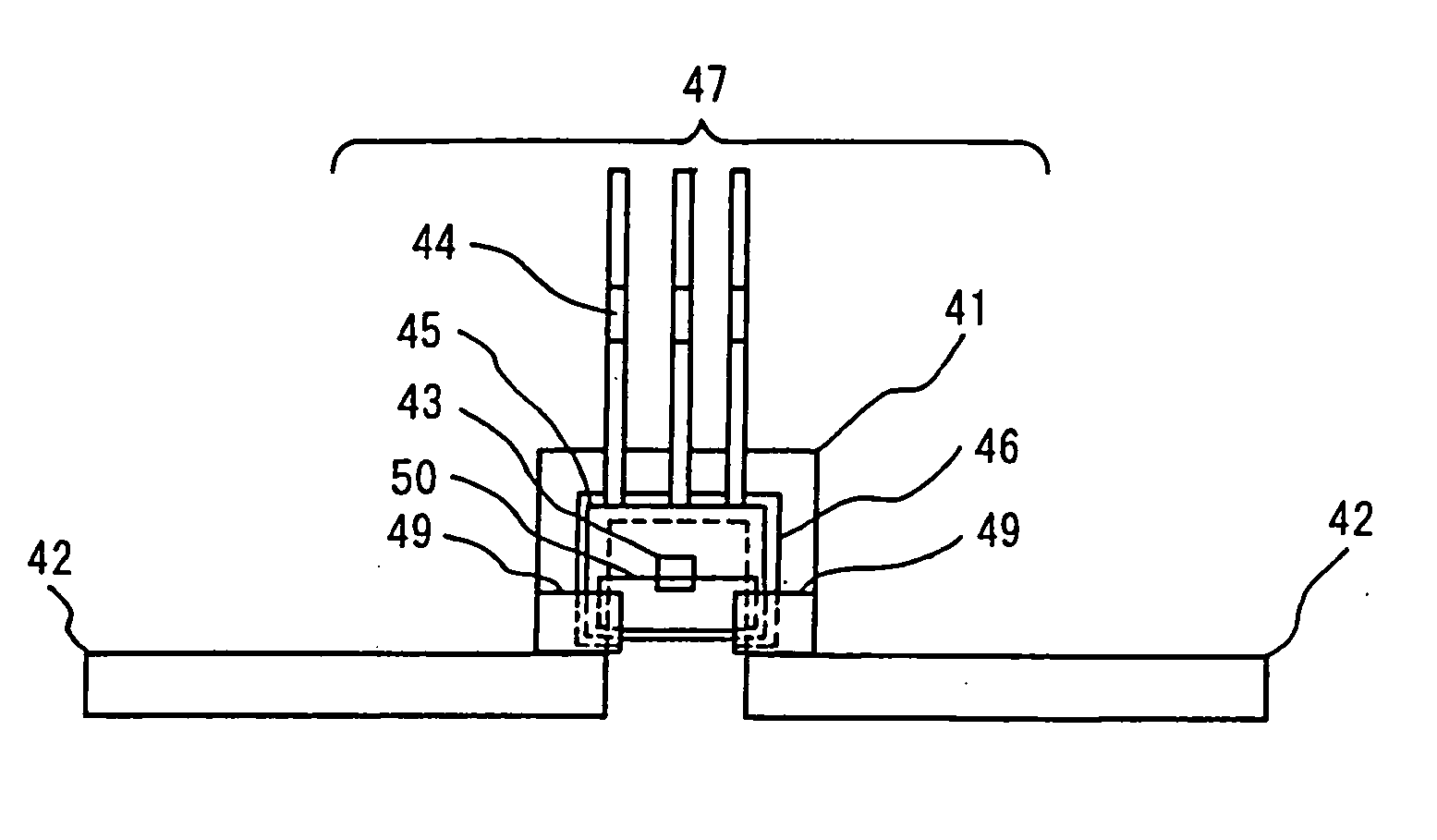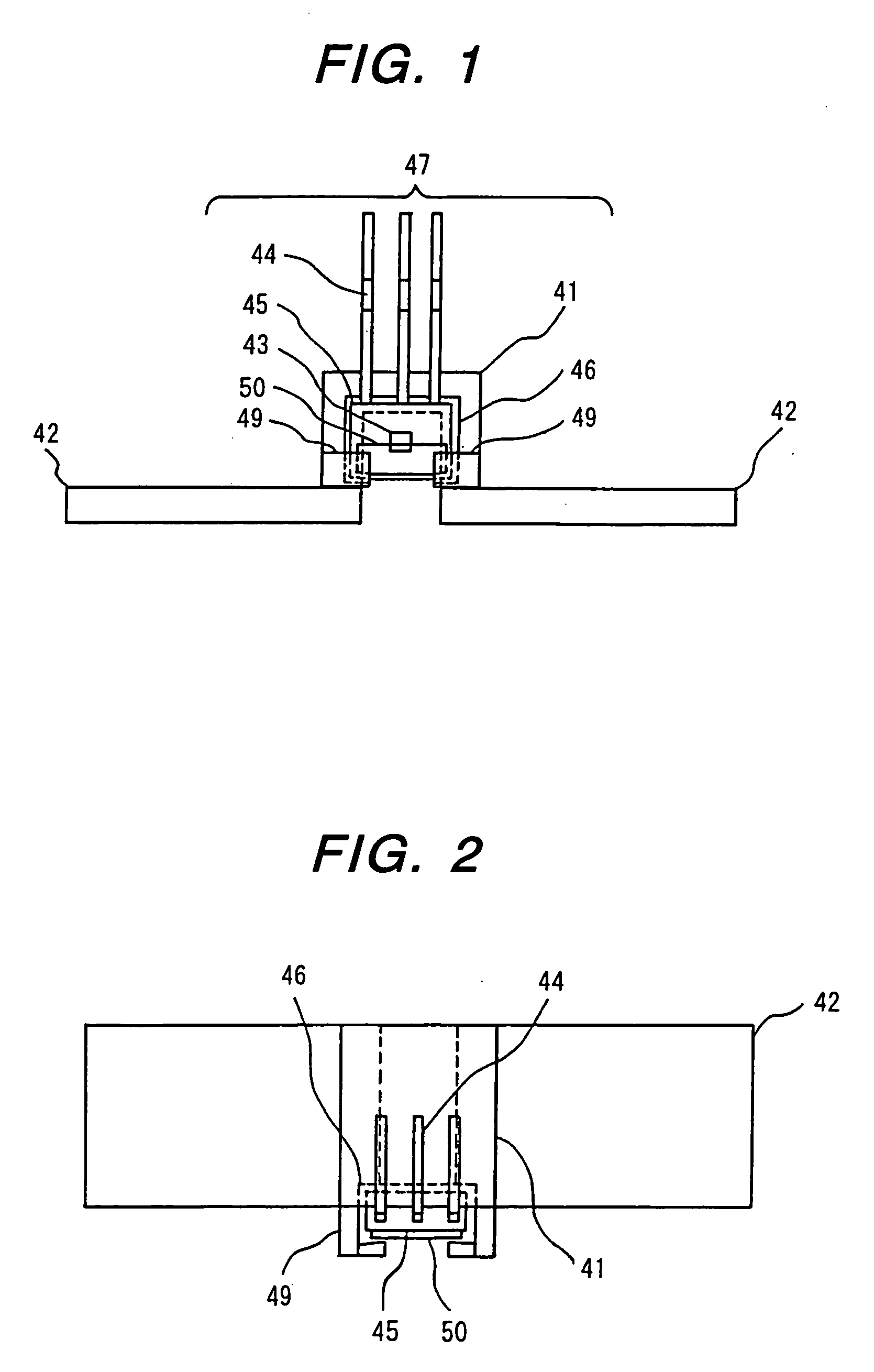Power converter, power system provided with same, and mobile body
- Summary
- Abstract
- Description
- Claims
- Application Information
AI Technical Summary
Benefits of technology
Problems solved by technology
Method used
Image
Examples
embodiment 1
[0205] A first embodiment of the present invention will be explained by referring to FIGS. 1 through 9. What is explained as an example in this embodiment is a power converter (inverter) which is incorporated in a motor drive system of an electric car that is driven by a motor as the vehicle's only drive source, and which converts DC power outputted from a battery, which is a power storage means, into three-phase AC power and supplies the power to the motor.
[0206]FIG. 9 is a schematic diagram showing the configuration of an electric car equipped with a motor drive system which incorporates a power converter according to this embodiment. In FIG. 9, 18 denotes a vehicle body. At the front of the vehicle body 18, front wheels having an axle 20 and wheels 19a and 19b attached to both ends of the axle 20 are rotatably mounted. At the rear of the vehicle body 18, rear wheels having an axle 22 and wheels 21a and 21b attached to both ends of the axle 22 are rotatably mounted.
[0207] A moto...
embodiment 2
[0248] A second embodiment of the present invention will be explained with reference to FIGS. 10 through 12. FIGS. 10 through 12 show the configuration of a current detector incorporated into a power converter of this embodiment. This embodiment is an altered example of the first embodiment. In this embodiment, a magnetic detecting semiconductor element 43 is fixed onto the printed wiring board 53 which is configured such that a plurality of laminated wiring sheets 54, each of which consists of a resin insulation layer and a laminated copper foil, are laminated; and a magnetic detecting unit 47 is provided in which the magnetic detecting semiconductor element 43 has electrical connections with the laminated wiring sheets 54 via aluminum wires, and connection terminals 44 have electrical connections with the laminated wiring sheets 54. The magnetic detecting semiconductor element 43 is covered with molded resin 45.
[0249] For example, the laminated wiring sheets 54 are disposed toget...
embodiment 3
[0254] A third embodiment of the present invention will be explained with reference to FIGS. 13 through 15. FIGS. 13 through 15 show the configuration of a current detector incorporated into a power converter of this embodiment. This embodiment is an altered example of the first embodiment. In this embodiment, a magnetic detecting unit 47 configured in the same manner as the first embodiment is provided, and a part of the magnetic detecting unit 47 is contained in the depression 46 of the detection conductor 41, which is provided in the same manner as the first embodiment, so that connection terminals 44 extend in the same direction as shown in the first embodiment.
[0255] The bottom portion of the nearly letter-U shaped resin formed body 57 having a protruding / recessed portion 58 is inserted into the cavity of the detection conductor 41 from one side of the detection conductor 41 which is the opposite side of the magnetic detecting unit 47 side, and is engaged with the detection co...
PUM
 Login to View More
Login to View More Abstract
Description
Claims
Application Information
 Login to View More
Login to View More - R&D
- Intellectual Property
- Life Sciences
- Materials
- Tech Scout
- Unparalleled Data Quality
- Higher Quality Content
- 60% Fewer Hallucinations
Browse by: Latest US Patents, China's latest patents, Technical Efficacy Thesaurus, Application Domain, Technology Topic, Popular Technical Reports.
© 2025 PatSnap. All rights reserved.Legal|Privacy policy|Modern Slavery Act Transparency Statement|Sitemap|About US| Contact US: help@patsnap.com



